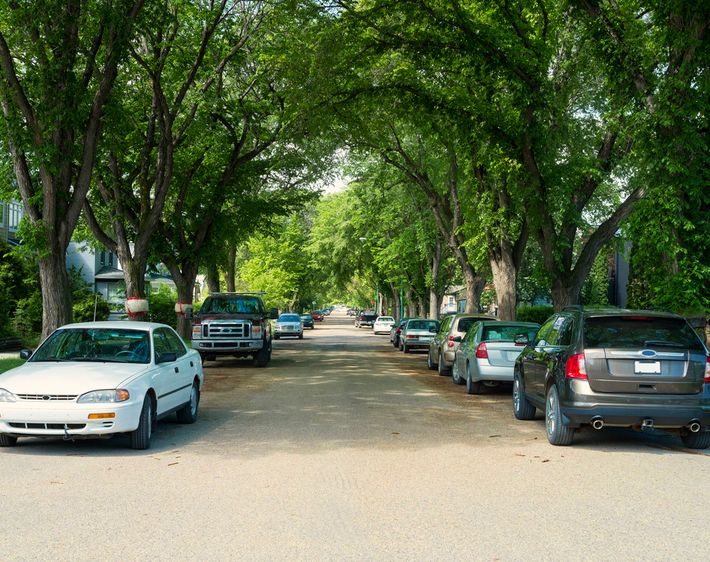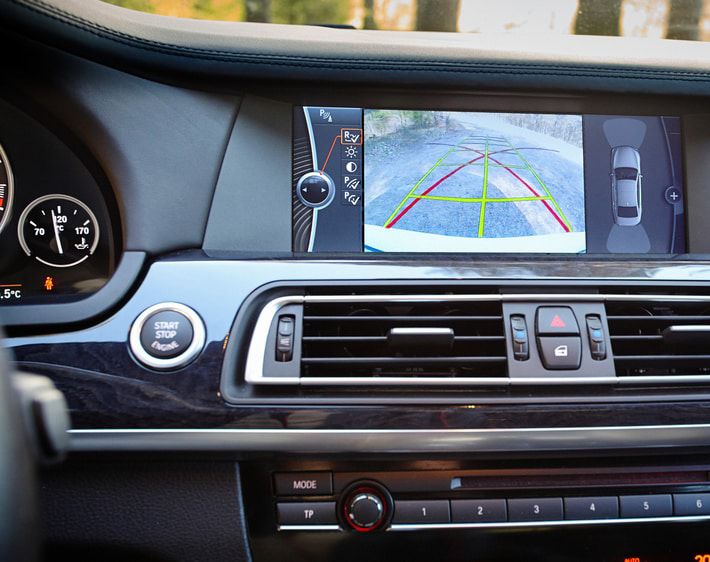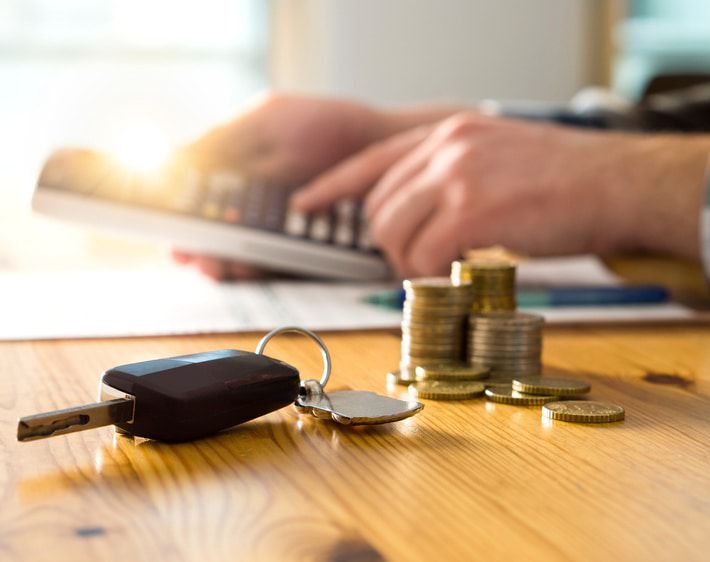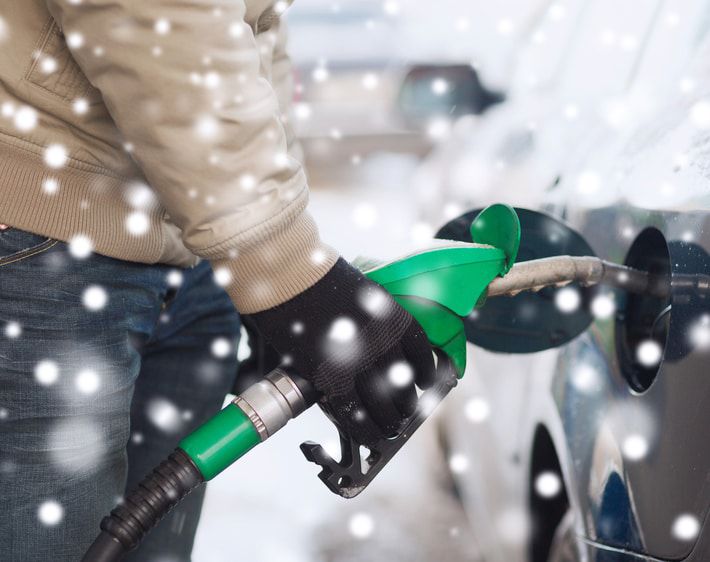UV damage, bird droppings, and dents from hail — not only does parking outdoors have the potential to negatively affect your car's cosmetic appeal, but it can also pose more safety issues compared to parking in a garage.
When it comes to evaluating where you should park your car daily, consider the benefits of protecting your car's interior and exterior with covered parking.
Top Benefits of Keeping Your Car in a Garage
1. Parking in a garage may help support vehicle performance.
While there's no silver bullet to maintaining pristine vehicle performance, keeping your car parked in a garage may help prevent wear and tear when compared to parking outside. Extreme heat and cold play a factor in the performance of your vehicle, and when you park under the sun (or snow) regularly, you can make your car more susceptible to certain issues.
Brakes
Parking your car outside in cold weather may accelerate the rusting process on your brakes. While some amount of rust is unavoidable during the winter months (especially if you're driving down salted roads), you may reduce the amount of exposure to moisture your vehicle gets by keeping it parked inside.
Exposure to moisture can lead to corrosion of your brake rotors, which can snowball into more brake problems like rotor pitting and premature brake pad wear.
Battery
Parking your car outside in extreme weather could lead to battery problems. On the one hand, heat can cause your battery fluid to evaporate, effectively shortening your car battery's life expectancy.
On the other hand, sub-zero temperatures may interfere with your battery's ability to start your car, making things feel a little "sluggish" when you crank the engine. Additionally, cold temps may also cause your battery fluid to freeze (and, therefore, expand), which can damage the battery cells and shorten its lifespan. Damaged battery parts could prevent the car from starting at all.
Heating & Air Conditioning
Exposure to the elements may affect how quickly your A/C gets hot or cold. On particularly hot days, parking your car in direct sunlight can cause a delay in getting cold air to blow through your A/C. The same goes for cold winter days, when direct exposure to colder weather can delay your car from becoming warm and toasty.
Tires
UV rays are one of several factors that may contribute to tire dry rotting, which is characterized by sidewall cracks and premature tire aging. When exposed to the sun for extended amounts of time, the rubber compounds in tires break down and deteriorate. The result? Cracks on the outside of your tire treads, which compromises the integrity and safety of the tire.
If you notice cracks and frays on the side of your tires, visit your local Firestone Complete Auto Care service center immediately and speak to a professional about replacements. Driving on damaged tires is not safe.
2. Covered parking reduces the odds of cosmetic damage.
When it comes to maintaining a beautiful car interior and exterior, there's a noticeable difference between a garage-kept vs. outside car. One of the benefits of covered parking? You may help your vehicle keep that "straight-out-of-the-dealership" look for longer.
When weighing the pros and cons of where to park your car, consider how parking outside can hurt your car's cosmetic appeal.
Paint
The great outdoors may not be so great for your car's paint job. Excessive sun exposure may cause car paint to oxidize, leading to fading and peeling. Plus, acidic bird droppings, sticky bug residue, and dripping tree sap can hurt your car's paint job, too.
Believe it or not, the paint on your vehicle is meant for more than shiny good looks. It serves as a protective layer for the metal body of your car, which helps prevent moisture damage, rust, and even dents.
Body
When you park outside, you run a higher risk of vehicle body damage during extreme weather events. From golf ball-sized hail to falling trees, leaving your car streetside poses a greater risk to the vehicle's body.
Interior
Exposure to heat and sunlight can wear down the dashboard, steering wheel, and upholstery in your car. When a vehicle sits in direct sunlight, temperatures within it can rise quickly. In fact, according to CarRentals.com, a parked car can reach temperatures of up to 170°F.
High temps and UV exposure are a recipe for worn upholstery, a cracked steering wheel, and a faded dashboard. If covered parking isn't an option, use a car shade to help protect the interior of your vehicle from sun damage.
3. Garage parking keeps your car safe(r).
There's no foolproof way to keep your car out of harm's way, but keeping your car stored overnight in a garage can significantly reduce the chances of others breaking in or vandalizing your vehicle.
Theft
Many public or apartment parking garages provide security guards to ward off thieves. Added security likely comes at a premium cost, so keep that in mind when deciding to pay extra for covered parking.
Even if your covered parking option doesn't come with security personnel, burglars who smash and grab are less likely to do so in a garage. Parking garages aren't exactly designed for a quick getaway. Plus, many garages have security cameras installed to help prevent not only car theft, but also hit-and-runs and vandalism.
We’ve Got Your Car Covered
For many car owners, covered parking is just not an option. If you're one of them, don't stress. Whether or not you have access to covered parking, you can go the extra mile in protecting your car by:
- Using a weatherproof car cover
- Covering the windshield with a sun shade
- Getting frequent car washes
- Sticking to your manufacturer-recommended maintenance schedule
If you've run into car trouble related to your parking situation, get the professional help you need. Visit your local Firestone Complete Auto Care for preventative service and urgent repairs.



